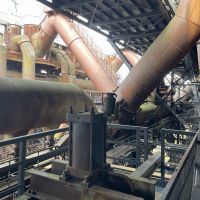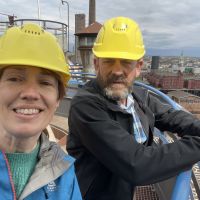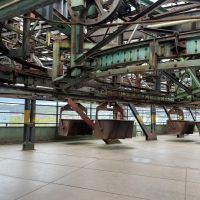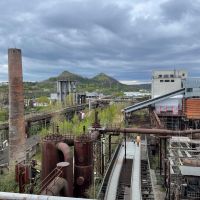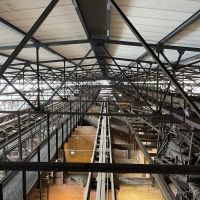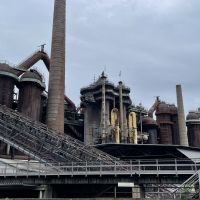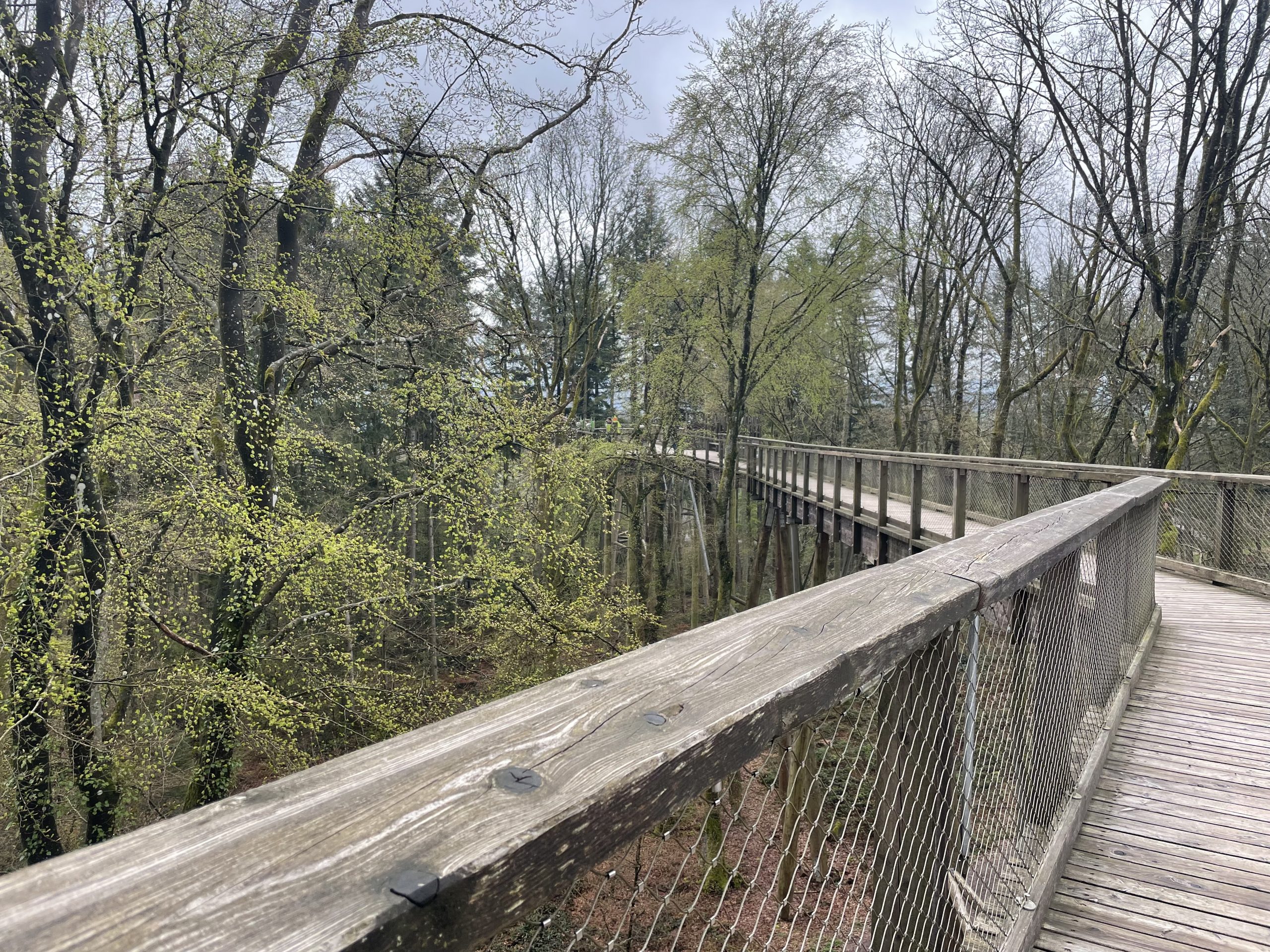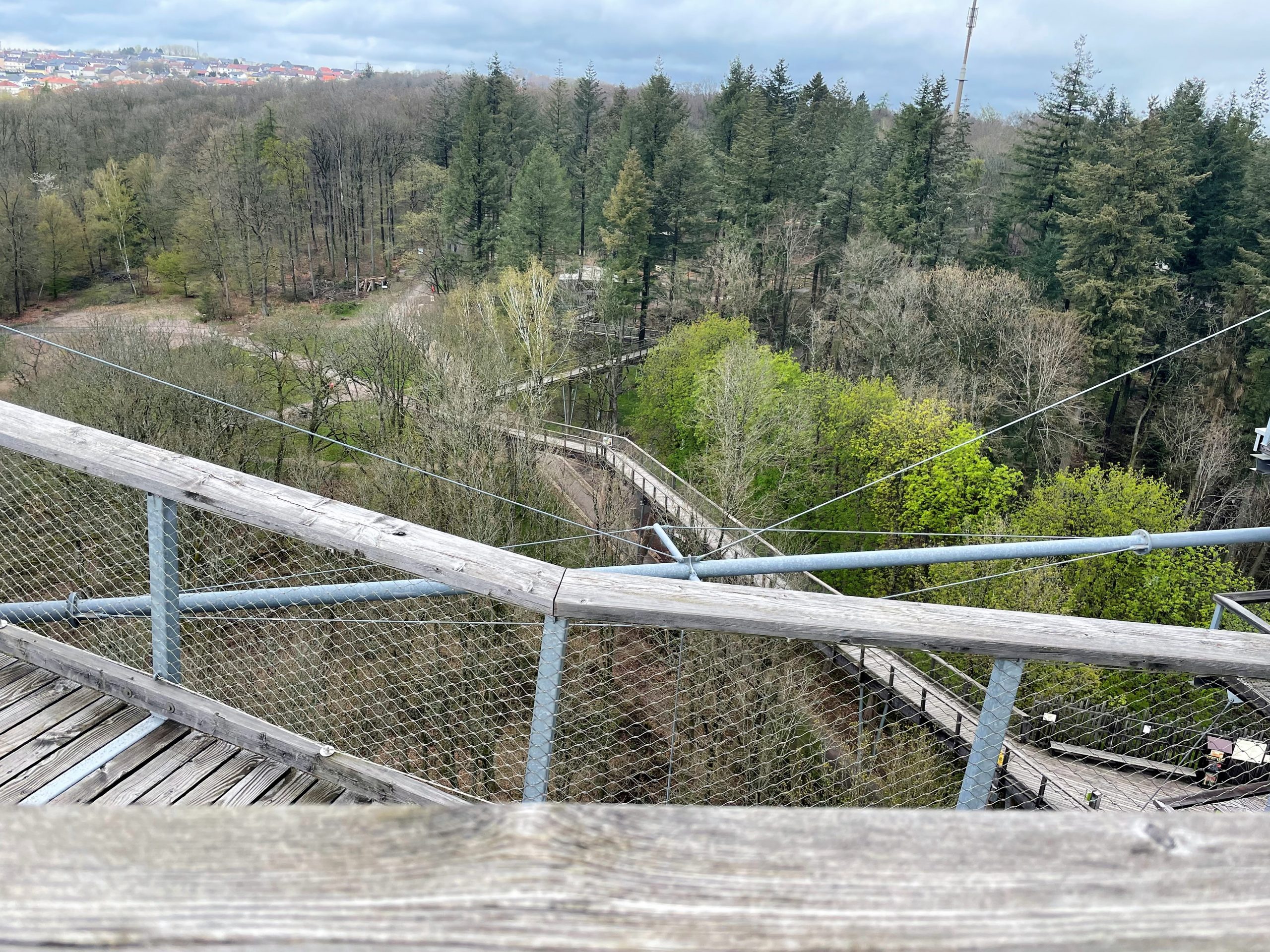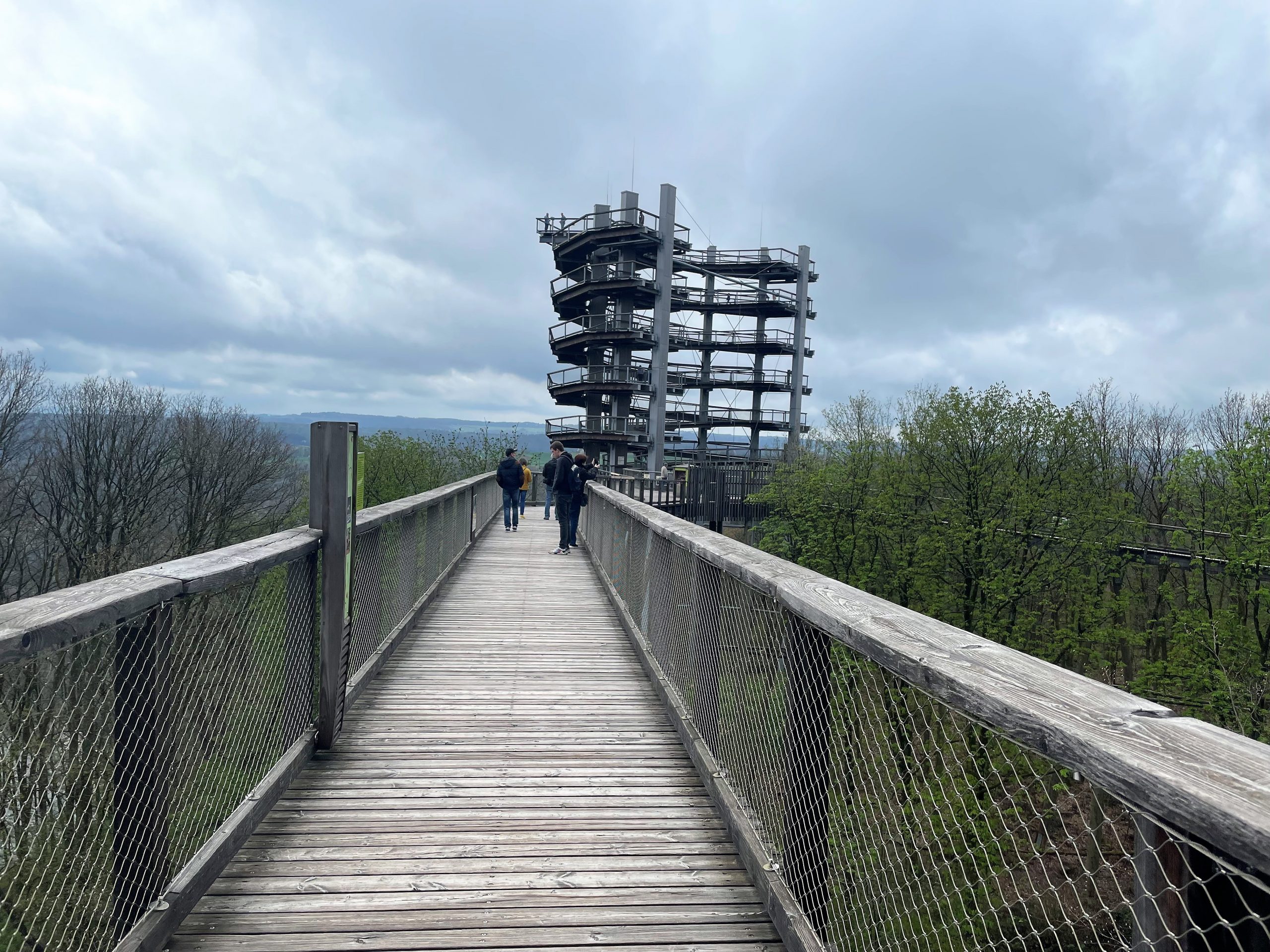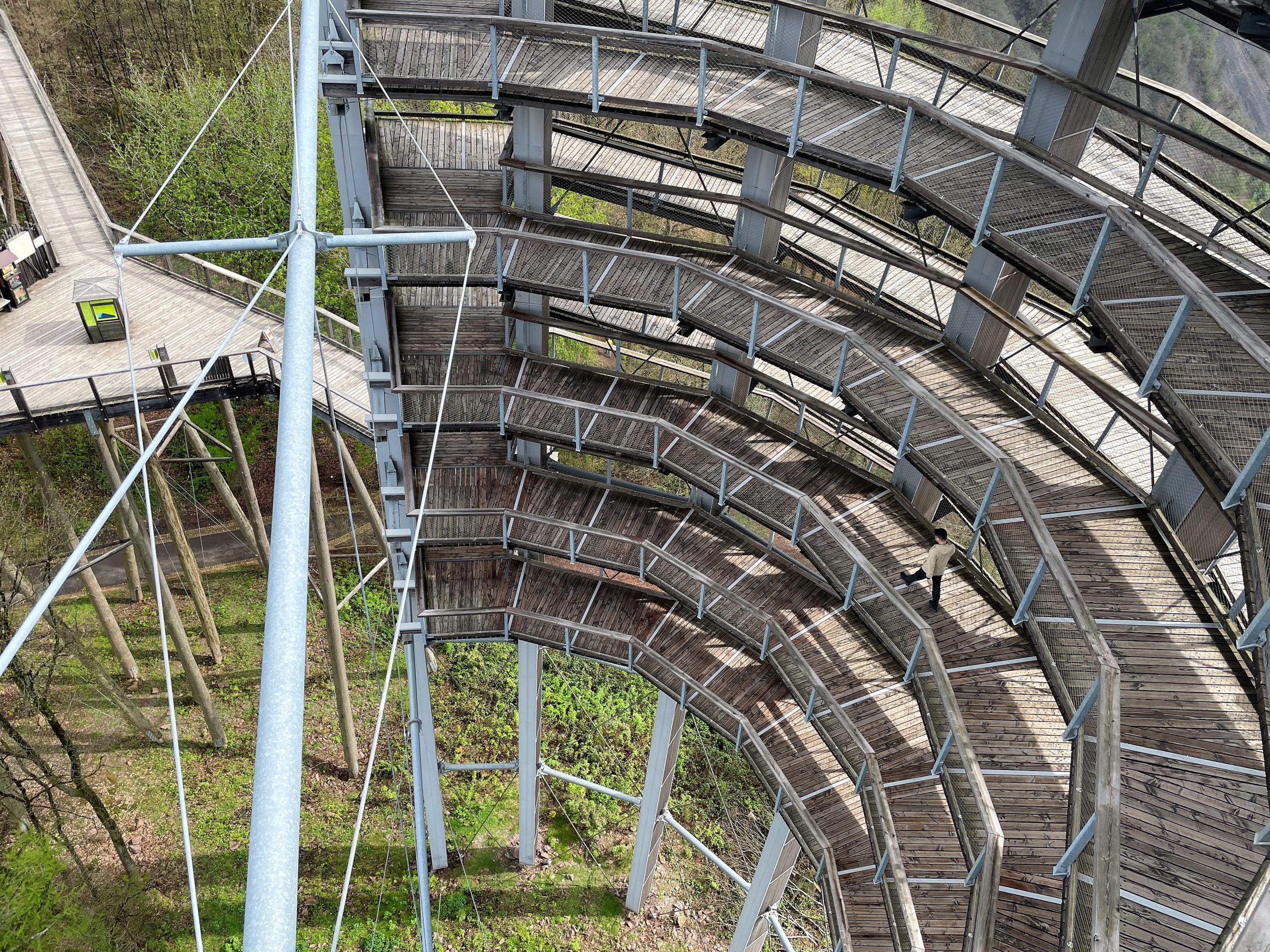22/04/2023
Our journey back to the UK was feeling like a second holiday. Having tourist attractions to look forward to visiting definitely improves the journey home.
Next stop was to be in Germany as we cut through Saarland on the way to the cheap fuel of Luxembourg. The route would stay on main roads but avoid the toll roads in France, ticking the economy box twice.
We left Eguisheim after using the services, annoyingly forgetting to fill up our fresh water containers. After finding the tank a bit green last year we stopped drinking from it and now carry a couple of 10 litre fresh water containers. There was a Super U just before the German border and we popped in to get some emergency water. While there we topped up our fresh food supplies, trying to judge ‘just enough’ to get home.
Arriving in Völklingen
Perusal of Search for Sites led us to a stopover in Völklingen at the Unesco World Heritage site of Völklingen Hütte. The Saarland is known for it’s heavy industry. Coalfields under the vast forests of the area provide the fuel for the smelting of iron ore, originally from over the border in Lorraine but now from further afield. Völklingen Hütte (Völklingen Ironworks) achieved it’s Unesco status shortly after it shut in 1987 so that one of the best preserved ironworks from the 18th and 19th century would not be lost.
We arrived to find that the majority of the car park, including half of the motorhome spaces, was taken up with the preparation for an open air cinema event. The motorhome spaces were behind the inflatable screen which was crumpled on the floor when we arrived. A look at the website for the company assuaged any concerns. The film was due to finish at 10pm, just about bedtime for us.
We slotted ourselves into one of the available spaces, parking between metal Heras style fencing which fitted well with the industrial vibe. Then we walked around the corner to buy tickets for the museum.
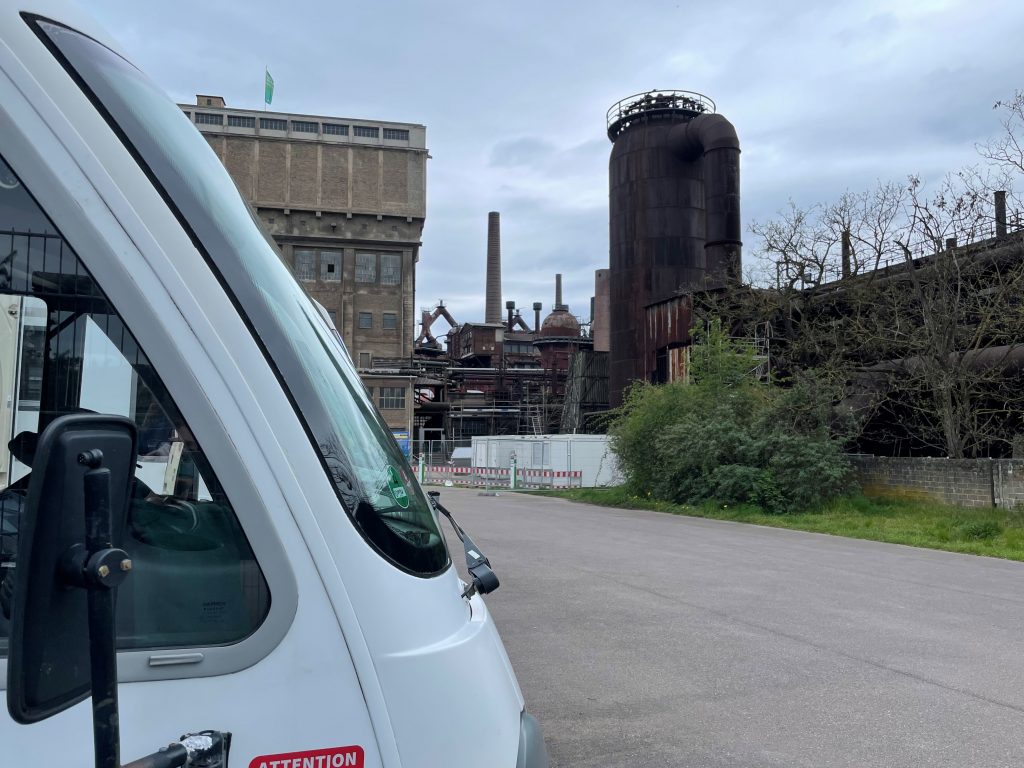
Bertie parked behind the water tower
Visiting Völklingen Hütte
My German, as I’ve said before, isn’t great but is serviceable for tourist transactions. However it isn’t really conversational. It takes my brain a little while to process the words I’m hearing. So as the ticket sales person rattled off information to me and I nodded along I knew that really I was faking it. I did understand the individual words but the sentences were not coming together. I walked away with my ticket and a head full of words, determined not to resort to going back and asking her to repeat herself in English. Then my brain clicked into gear and I realised I was being told that the art exhibition was upstairs in the building that housed the ticked office, but that the main museum could not be accessed via the usual bridge and we would have to go across the road and through the Biergarten. Phew, that had taken a bit of brain effort.
We decided to look at the art exhibition first. This was a video installation ‘When We Are Gone’ by Julian Rosefeldt that we were completely unprepared for. We spent an hour wandering around the gloomily lit blower hall of the factory finding videos hidden in the bowels of the machinery. Beanbags were spread around each installation to allow people to get comfortable and watch the films. It really needed a whole day to devote to understanding the installation but we didn’t have the time if we were going to the museum as planned.
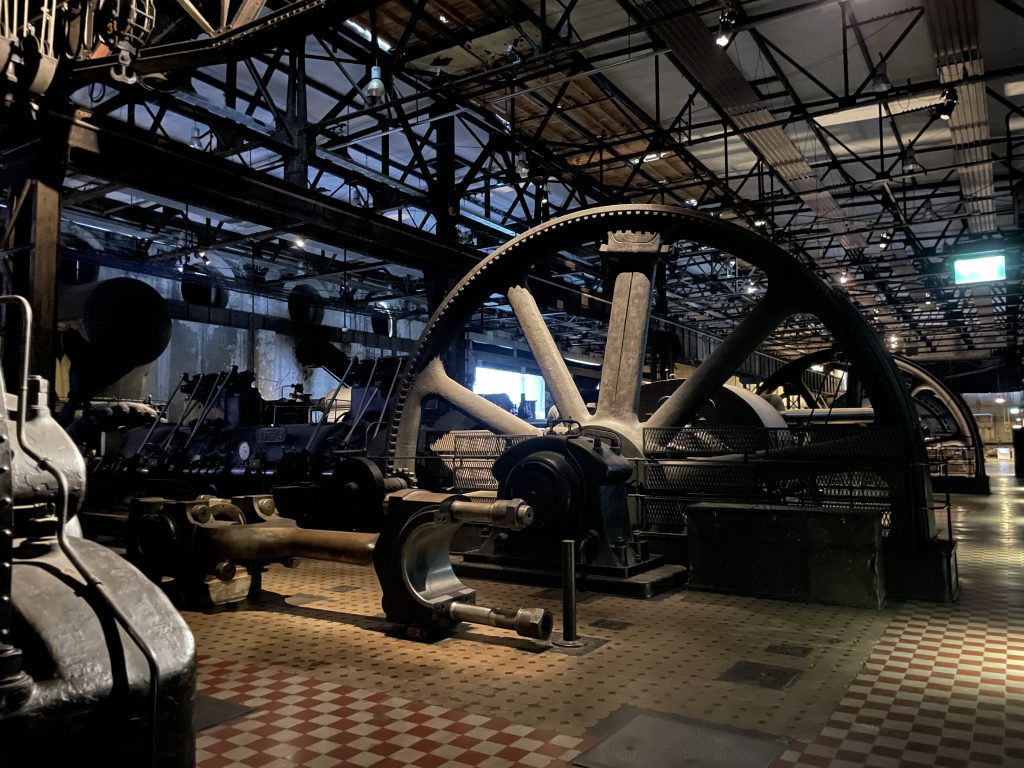
Inside the Blower Hall
Blinking, and a little shell shocked from the visual input of both the films and the location, we walked out into the daylight and crossed the road to the museum. Here the factory is the museum, you can wander round the various halls and see the enormous machinery that supported processes that took place here as recently as 1986. We picked up hard hats and climbed to the top of the Blast Furnace towers where we could see the factory laid out in it’s rusty glory beneath us, the spoil heaps on the horizon and the current Steelworks which was belching smoke and producing a dragon’s fiery exhalation every now and again.
After wandering around the iron maze of the buildings we did a circuit of the outside. ‘Paradise’ is a rewilding project that has allowed nature to claim some of the area. There are bee hives and ponds. There are also artwork installations that range from street art to an 11 meter high King Kong.

King Kong by Ottomar Horl
The ironworks here dates to 1872, although there were a few initial hiccoughs and successful iron production didn’t start until 1881. Through the first and second world war the factory produced iron for the machinery of war. An ignominious part of the ironworks history was the owners enthusiastic support of the Nazi party and the use of forced labour to support Germany’s war effort. You can see a memorial to the foreign workers and prisoners of war who worked and died at the factory or the associated correction facility during both world wars.
After the war the factory, and the whole of Saarland, was under French control, but eventually the area became part of pre-unification West Germany. The factory continued to be successful, evolving and adopting more modern production methods through the boom years of the 60s and 70s but eventually the steel crisis of the 80s meant that the decision was taken to close it down.
This is an impressive memorial to the steel industry of the 18th and 19th century and absolutely worth visiting and taking your time to see and try to understand the ironworks. It is a vast and confusing site with little in the way of explanation as you walk around. I wish I had done a bit of preparation to make the most of it and maybe visiting over two days would have been less exhausting. One thing we missed due to running out of time was the Ferrodrom which is a hands on exploratory centre that looks great fun for kids (and big kids).
It had been an intense day and we retired to Bertie pretty exhausted. As we sat and chilled in the van we watched the final preparations for the cinema. The screen was inflated and blocked out much of the audience but we did venture out for a wander around the site and a look at the food stalls. We were hoping for some kind of sausage but most of the stalls were selling a variation on the theme of fried potatoes, popcorn or sweets.
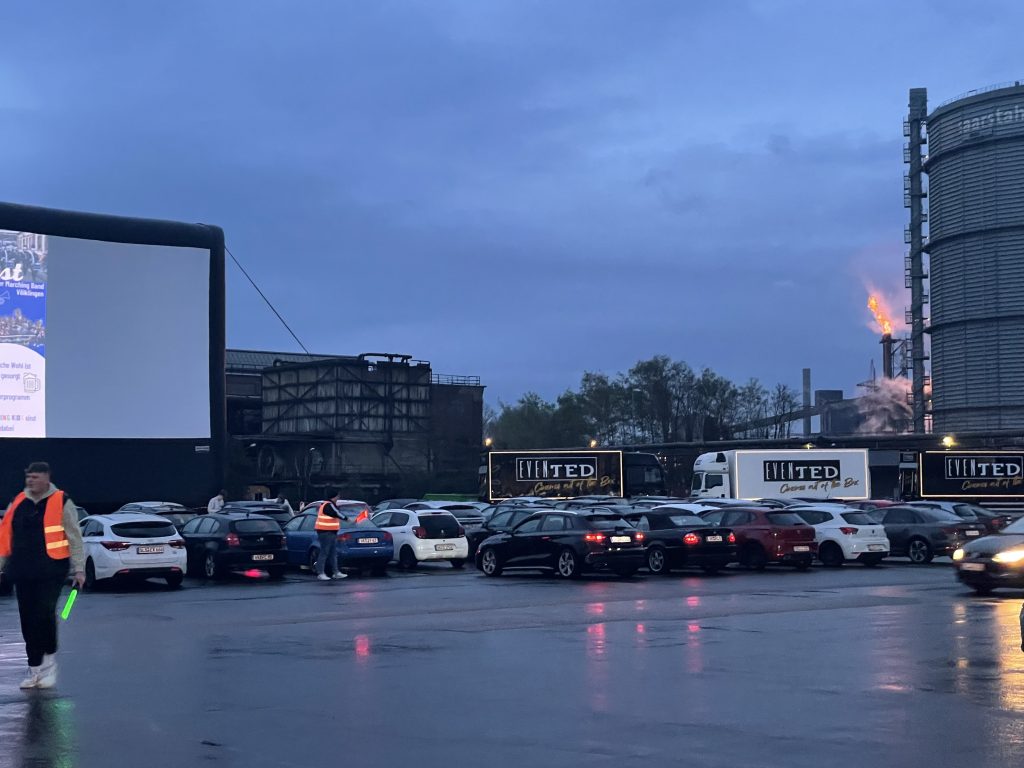
Set up for the drive-in. You can see the modern steelworks behind with it’s flaming chimney
At 10pm on the dot a cheer went up from the audience and then there was half an hour or so of people leaving and clearing away before we were left in relative silence. Very efficient.
A treetop walk
The following morning we got up bright and early to head to somewhere that would provide a bit of a contrast. The Baumwipfelpfad is a treetop walk through the forest canopy that ends with a view point across the great bend in the Saar that is the Saarschleife. There are lots of these projects across Germany and we were lucky that this one was on our way to Luxembourg at the town of Orscholz. If it hadn’t been on the way I don’t know that we would have had enough fuel to visit. We were trying to run our tank as close to empty as possible before refuelling.
In Orscholz there is motorhome parking at what I would describe as a ‘sanatorium’, part leisure centre, hospital and rehabilitation unit. Although we weren’t staying the night we decided to use this area of rough and sloping ground to park up. We drove in through a barrier and collected a ticket.
Up the road was the entrance to the treetop walk that was one of a number of attractions here. There were cafes, adventure playgrounds and many walking routes through the forest. We saw birds flitting around us as we walked up to the ticket office. This was somewhere that we could see ourselves spending more time but we were on a timescale now and this was to be our last touristy stop before our return home.
The treetop walk gets gradually higher as it meanders through the forest. It’s designed to be accessible so that wheelchairs and pushchairs can use it as easily as pedestrians.
A couple of feeders hung in the trees attracted red squirrels as well as birds and there were educational panels all along the route providing information about the wildlife, trees and geology of the area. We could hear woodpeckers, but we couldn’t catch sight of them. We really needed more time to sit down with binoculars.
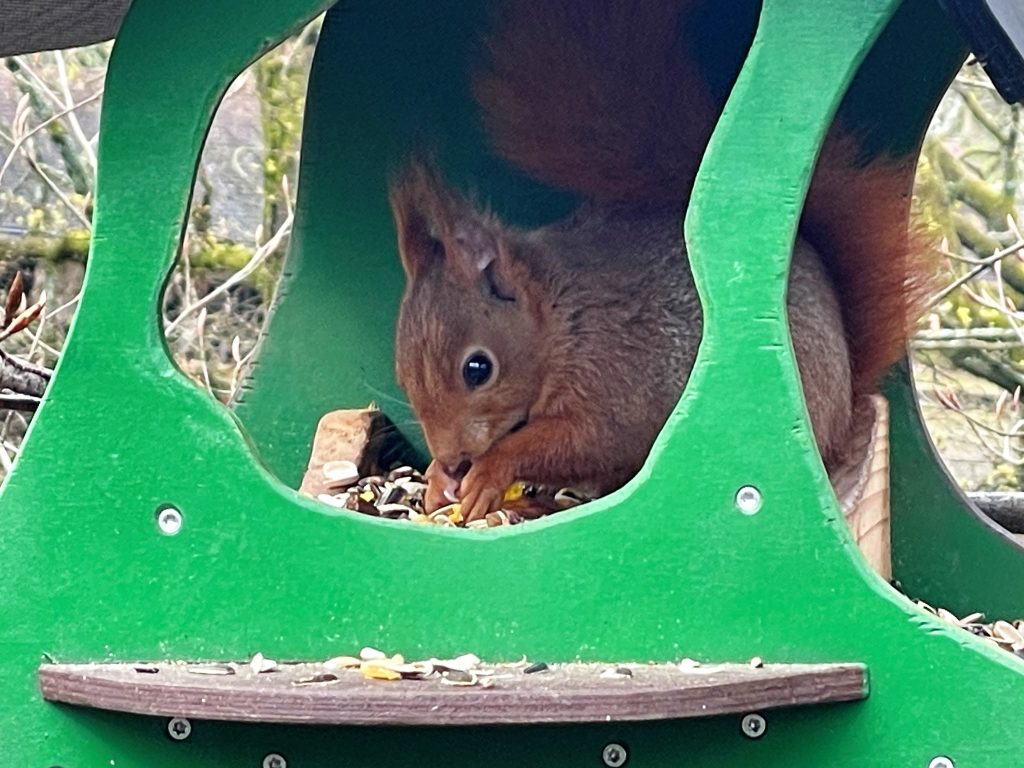
Red squirrel on a feeder
The final part of the route is a slow and gentle climb up several stories to give a spectacular outlook over the bend in the river. A geological feature has forced the river to double back on itself, creating an almost-island in the centre where, with no surprise, there is a castle. The structure of the viewing platform is impressive in it’s own right although we both agreed that a helter-skelter descent would have enhanced it.
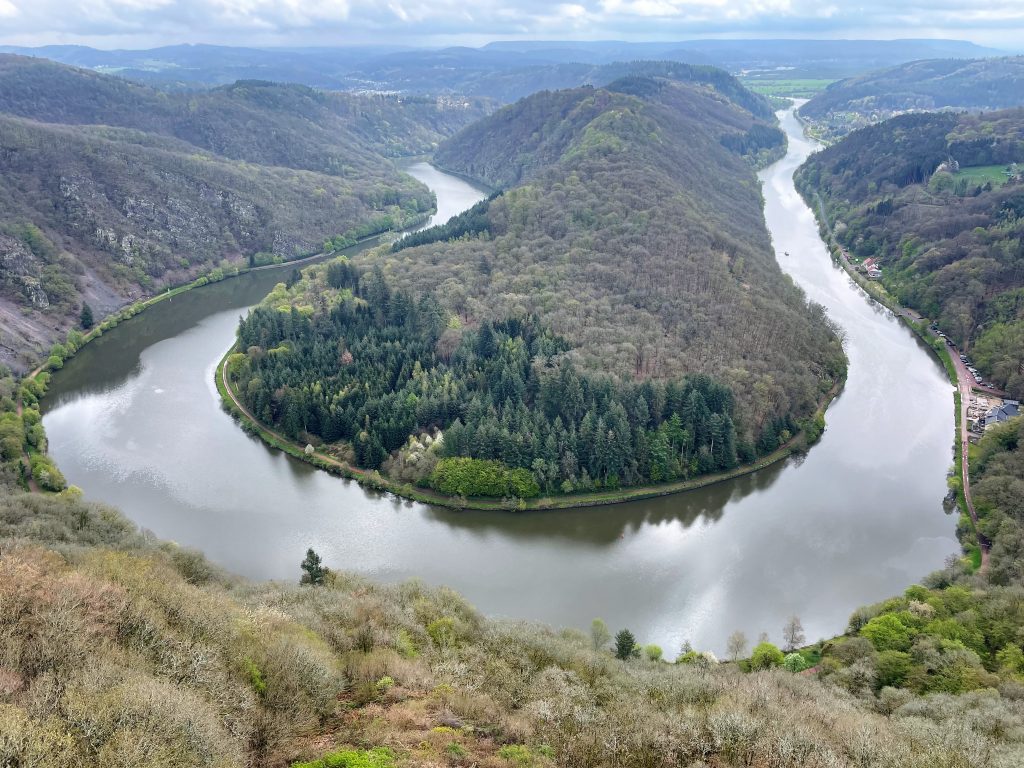
The Saarschleife
After spending a little time here we walked back to Bertie. I went to redeem the parking ticket in the reception area of the leisure centre. We expected to pay €4 for the parking but we had been less than two hours so it was only €1, bargain.
That was it for Germany. Time to start the real journey home.

